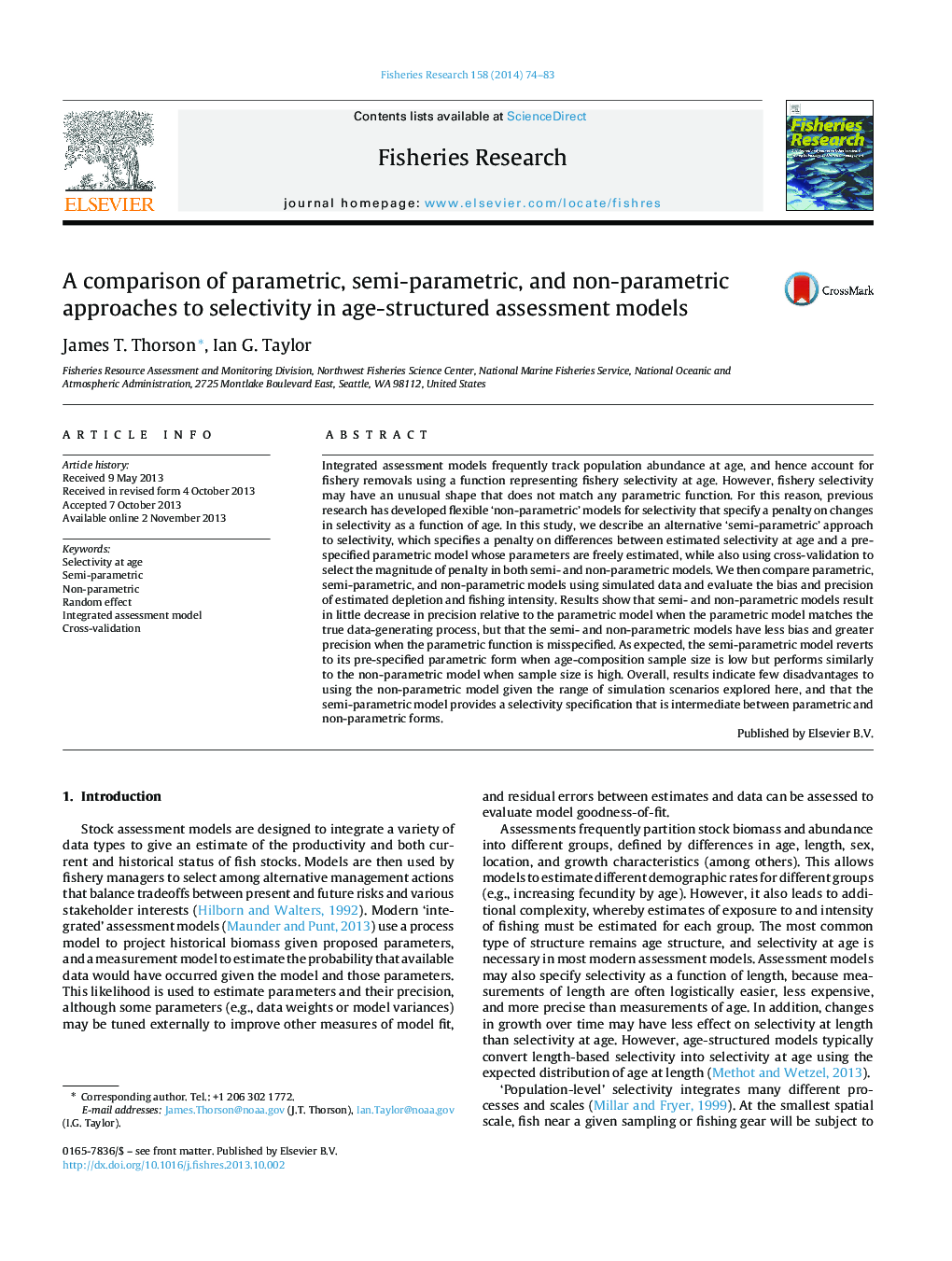| کد مقاله | کد نشریه | سال انتشار | مقاله انگلیسی | نسخه تمام متن |
|---|---|---|---|---|
| 4542999 | 1626810 | 2014 | 10 صفحه PDF | دانلود رایگان |
• We compare parametric, non-parametric, and semi-parametric selectivity-at-age models.
• Semi- and non-parametric models reduce bias when selectivity is misspecified.
• Semi- and non-parametric models cause little decrease in precision otherwise.
• Semi- and parametric models perform similarly when sample sizes are low.
Integrated assessment models frequently track population abundance at age, and hence account for fishery removals using a function representing fishery selectivity at age. However, fishery selectivity may have an unusual shape that does not match any parametric function. For this reason, previous research has developed flexible ‘non-parametric’ models for selectivity that specify a penalty on changes in selectivity as a function of age. In this study, we describe an alternative ‘semi-parametric’ approach to selectivity, which specifies a penalty on differences between estimated selectivity at age and a pre-specified parametric model whose parameters are freely estimated, while also using cross-validation to select the magnitude of penalty in both semi- and non-parametric models. We then compare parametric, semi-parametric, and non-parametric models using simulated data and evaluate the bias and precision of estimated depletion and fishing intensity. Results show that semi- and non-parametric models result in little decrease in precision relative to the parametric model when the parametric model matches the true data-generating process, but that the semi- and non-parametric models have less bias and greater precision when the parametric function is misspecified. As expected, the semi-parametric model reverts to its pre-specified parametric form when age-composition sample size is low but performs similarly to the non-parametric model when sample size is high. Overall, results indicate few disadvantages to using the non-parametric model given the range of simulation scenarios explored here, and that the semi-parametric model provides a selectivity specification that is intermediate between parametric and non-parametric forms.
Journal: Fisheries Research - Volume 158, October 2014, Pages 74–83
